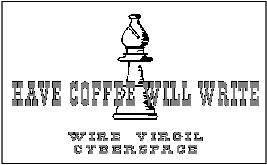DAILY RITUALS: HOW ARTISTS WORK…
Daily Rituals: How Artists Work
by
Mason Curry
…Standing naked at his hotel-hotel room window, Wolfe found that his weariness had suddenly evaporate and that he was eager to write again. Returning to the table he wrote until dawn with, he recalled, amazing speed, ease and sureness. Looking back, Wolfe tried to figure out what had prompted the sudden change—and realized that, at the window, he had been unconsciously fondling his genitals, a habit from childhood that, while not exactly sexual (his penis remained limp and unaroused, he noted in a letter to his editor), fostered such a good male feeling that it had stoked his creative energies. From then on, Wolfe regularly used this method to inspire his writing sessions, dreamily exploring his male configuration until the sensuous elements in every domain of life became more immediate, real and beautiful. —Thomas Wolfe (1900-1938), page 9.
[John Cage] said that it’s a very good idea that after you write a little bit, stop and then copy it. Because while you’re copying it you thinking about it, and it’s giving you other ideas. And that the way I work. And it’s marvelous, just wonderful, the relationship between working and copying. —Morton Feldman (1926-1987), page 15.
All those I think who have lived as literary men—working daily as literary labourers—will agree with me that three hours a day will produce as much as a man ought to write. But then, he should have so trained himself that she shall be able to work continuously during those three hours,—so have tutored his mind that it shall not be necessary for him to sit nibbling his pen, and gazing at the wall before him, till he shall have found the words with which he wants to express his ideas. It had at this time become my custom,—and is still my custom, though of late I have become a little lenient of myself,—to write with my watch before me, and to require of myself 250 words every quarter of hour. I have found that the 250 words have been forthcoming as regularly as my watch went. But my three hours were not devoted entirely to writing. I always began my task by reading the work of the day before, an operation which would take me half an hour, and which consisted chiefly in weighting with my ear the sound of the words and phrases…. This division of time allowed me to produce over ten pages of of an ordinary novel volume a day, and if kept up through ten months, would have given as its results three novels of three volumes each in the year;—the precise amount which so greatly acerbated the publisher of Paternoster Row, and which must at any rate be felt to be quite as much the novel readers of the world can want from the hands of one man. —Anthony Trollope (1815-1882) page 24-5
The one drawback to this self-made schedule, Murakami admitted in a 2008 essay, is that it doesn’t allow for much of a social life. “People are offended when you repeatedly turn down their invitations,” he wrote. But he decided that the indispensable relationship in his life was with his readers. “My readers would welcome whatever life style I chose, as long as I made sure each new work was an improvement over the last. And shouldn’t that be my duty—and my top priority—as a novelist?” —Haruki Murakami (1949-) page 60-1
For the morning writing, her ritual is to rise around 5:00, make coffee, and “watch the light come.” This last part is crucial. “Writers all devise ways to approach that place where they expect to make the contact, where they become the conduit, or where they engage in this mysterious process,” Morrison said. “For me, light is the signal in the transaction. It’s not being in the light, it’s being there before it arrives. It enables me, in some sense.” —Toni Morrison (1931) page 62.
Asked once when he found time to form the design of a new book, James rolled his eyes, patted the questioner on the knee, and said, “It’s all about, it’s about—it’s in the air—it, so to speak, follows me and dogs me.” —Henry James (1843-1916) page 82.
Beckett’s entire life revolved around his almost psychotic obsession to write.
The siege, a period of intense creative activity beginning in 1946, began with an epiphany. On a late-night walk near Dublin harbor, Beckett found himself standing on the end of a pier in the midst of a winter storm. Amid the howling wind and churning water, he suddenly realized that the “dark he had struggled to keep under” in his life—and in his writing, which had until then failed to find an audience or meet his own aspirations—should, in fact, be the source of his creative inspiration. “I shall always be depressed,” Beckett concluded, “but what comforts me is the realization that I can now accept this dark side as the commanding side of my personality. In accepting it, I will make it work.” —Samuel Beckett (1906-1989) page 91.
Balanchine rose early, before 6:00 a.m., made a pot of tea, and read a little or played a hand of Russian solitaire while he gathered his thoughts. —George Balanchine (1904-1983) page 124.
Gershwin was dismissive of inspiration, saying that if he waited for the muse he would compose at most three songs a year. It was better to work every day. “Like the pugilist,” he said, “the songwriter must always keep in training.” —George Gershwin (1898-1937) page 133.






